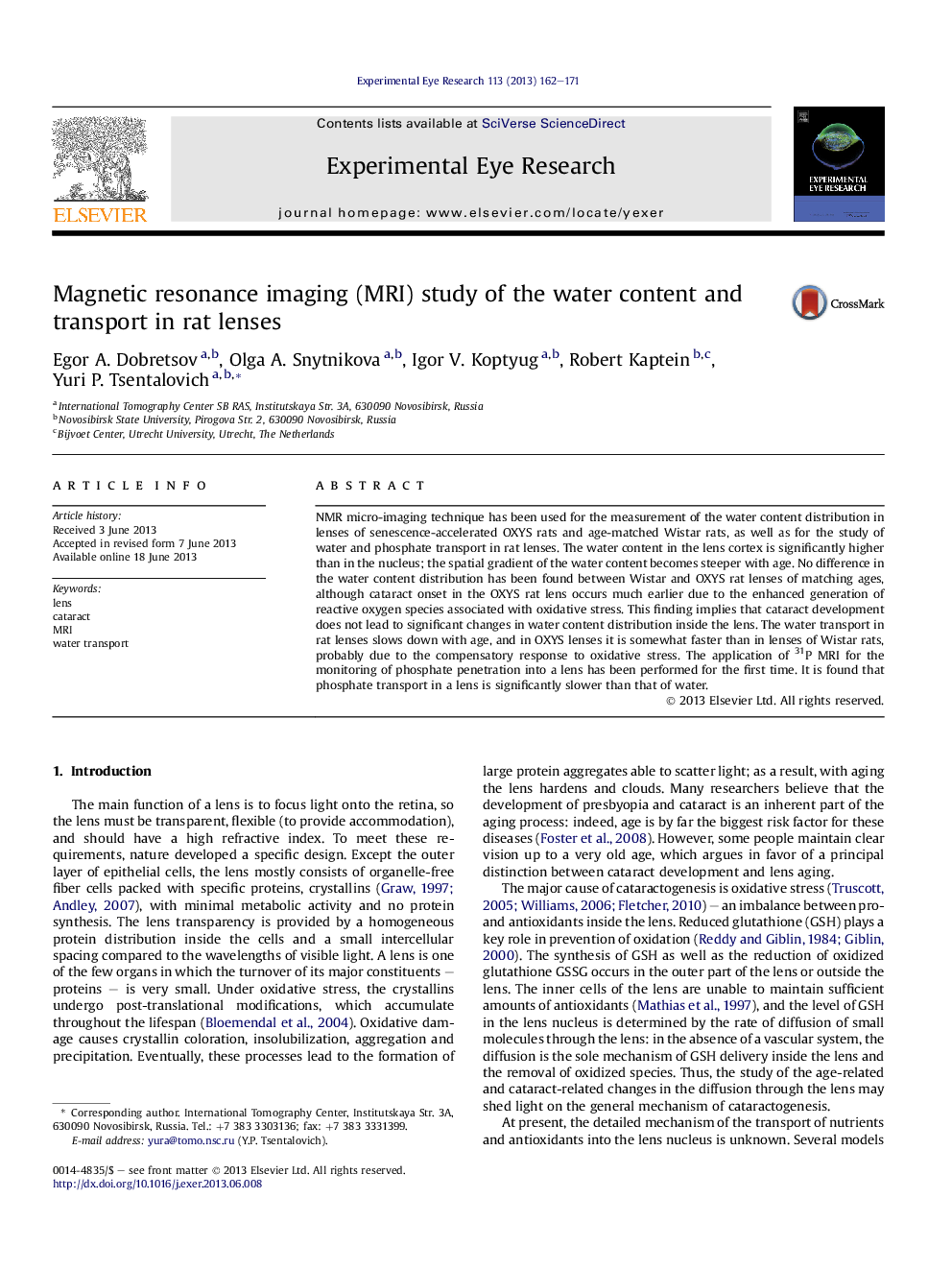| Article ID | Journal | Published Year | Pages | File Type |
|---|---|---|---|---|
| 6197281 | Experimental Eye Research | 2013 | 10 Pages |
â¢Proton density, T1 and T2 maps of a lens reflect water content distribution.â¢The water content in the lens nucleus decreases with age.â¢The water content gradient in the lens cortex becomes steeper with age.â¢The rate of water diffusion through the lens decreases with age.â¢There is no difference in the water content distribution between Wistar and OXYS rat lenses.
NMR micro-imaging technique has been used for the measurement of the water content distribution in lenses of senescence-accelerated OXYS rats and age-matched Wistar rats, as well as for the study of water and phosphate transport in rat lenses. The water content in the lens cortex is significantly higher than in the nucleus; the spatial gradient of the water content becomes steeper with age. No difference in the water content distribution has been found between Wistar and OXYS rat lenses of matching ages, although cataract onset in the OXYS rat lens occurs much earlier due to the enhanced generation of reactive oxygen species associated with oxidative stress. This finding implies that cataract development does not lead to significant changes in water content distribution inside the lens. The water transport in rat lenses slows down with age, and in OXYS lenses it is somewhat faster than in lenses of Wistar rats, probably due to the compensatory response to oxidative stress. The application of 31P MRI for the monitoring of phosphate penetration into a lens has been performed for the first time. It is found that phosphate transport in a lens is significantly slower than that of water.
